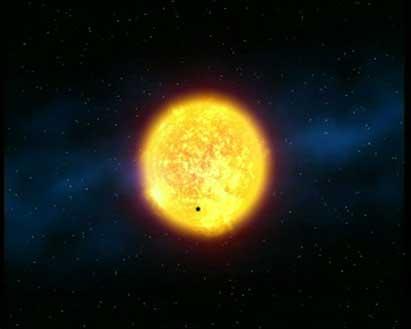Transit of Venus

121.5 years. That is the time that has had to wait for man to be able to see this curious astronomical phenomenon again: pass a small black point ahead of the Sun. In fact, the planet Venus is simply a step between the Earth and the Sun.
Of the planets of the Solar System only Mercury and Venus can pass by Mrs. Eguzki, who are somewhat closer to the Sun than to the Earth. You can also pass the Moon, in which case we call it an eclipse. Transit will begin at 7:20 in the morning and will last approximately 6 hours. It will be from Europe where it is best seen.
The orbits of Earth and Venus are not at the same level; that of Venus is somewhat more inclined. Because of this buzzing, normally Venus passes above or below the Sun, so it is not seen from Earth. But when the Sun, Venus and the Earth are put on the same line, the transit of Venus occurs. The previous one took place in December 1882 and the next one will take place 121.5 years later, on June 8, 2004. The next one will be within 8 years, on 6 June 2012, the next 105.5 years later, on 11 December 2117; the next 8 years later, etc. In 1882 you can see for the last time the passage of Venus.
In kutxaEspacio de la Ciencia you are ready for the event. For this reason, they have organized an exhibition explaining what the transit of Venus is and how it will happen.
Scientists are concerned about the observations that people can make that day. In fact, if observation is not done correctly, it can cause serious eye injuries. You should never look directly at the Sun if you do not use devices designed for it. Therefore, experts recommend projecting on a white screen the image of the Sun taken with telescopes and / or binoculars.
Buletina
Bidali zure helbide elektronikoa eta jaso asteroko buletina zure sarrera-ontzian











